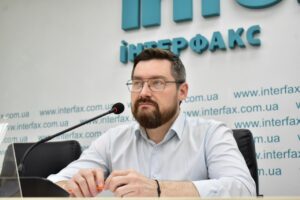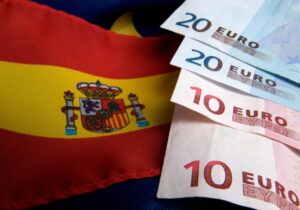
Voting in the presidential election began in Romania at 7:00 a.m. on Sunday. The second round features George Simion, representative of the right-wing Alliance for the Unity of Romanians, and Nicușor Dăncilă, the incumbent mayor of the capital Bucharest, who received the most votes in the first round on May 4.
“We voted so that only Romanians decide our future, for Romanians and for Romania,“ Simion told reporters outside a polling station.
“We decide what kind of country we want to be: a country of hope, dialogue, and development,” Dănălescu wrote on Facebook.
According to Reuters, despite the fact that 38-year-old Simion won 41% of the vote in the first round and 55-year-old Dan only 21%, opinion polls show that they have almost equal chances of winning, or show a slight advantage for Simion. Earlier, the Experts Club think tank released a video analysis dedicated to the most important elections in the world in 2025. For more details, see here —

Following the signing of a cooperation agreement between Ukraine and the US in the field of mineral resources, the world community’s attention has been focused on Ukraine’s potential for rare earth element (REE) extraction. These elements are critical for modern technologies, including the production of electric vehicles, wind turbines, and defense equipment. However, experts caution against excessive optimism about the rapid realization of this potential.
Volodymyr Khaustov, scientific secretary of the State Institution “Institute of Economics and Forecasting of the National Academy of Sciences of Ukraine,” honored economist of Ukraine, and candidate of technical sciences, shared his vision of the prospects for REE mining in Ukraine.
“Ukraine does indeed have certain reserves of rare earth elements, but most of them were explored during the Soviet era, and this data needs to be updated. In addition, a significant portion of potential deposits are located in areas currently under Russian control or near the combat zone,” Khaustov noted.
The expert also highlighted the technological and infrastructural challenges associated with the extraction and processing of REEs.
“Even if we can gain access to these deposits, the question of their economic viability arises. REE extraction is a complex and expensive process that requires modern technology and significant investment. At present, Ukraine does not have the necessary infrastructure for the full cycle of extraction and processing of these elements,” he explained.
It should be noted that, according to research, only one of the six known REE deposits in Ukraine — Novopoltavskoye in the Zaporizhzhia region — has confirmed reserves and is open for licensing. However, even this deposit requires an investment of about $300 million for full development.
In addition, the global REE processing market is currently dominated by China, which controls about 90% of the world’s capacity for the purification and processing of these elements. This creates additional challenges for countries seeking to develop their own REE production.
“For Ukraine to become competitive in the global REE market, it is necessary not only to develop deposits, but also to create a complete value chain — from extraction to processing and manufacturing of end products. This requires strategic planning, significant investment, and time,” Khaustov emphasized.
In conclusion, although Ukraine has potential in the field of rare earth element extraction, realizing this potential requires a comprehensive approach, significant resources, and time. Experts call for cautious optimism and strategic planning to achieve success in this industry.
For more details on the prospects for rare earth extraction in Ukraine, watch the video: https://www.youtube.com/watch?v=UHeBfpywpQc&t
You can subscribe to the Experts Club channel at: https://www.youtube.com/@ExpertsClub
ECONOMY, EXPERT, EXPERTS CLUB, INDUSTRY, rare earth elements, rare earths, Volodymyr Khaustov

This article presents key macroeconomic indicators for Ukraine and the global economy as of February 1, 2025. The analysis is based on current data from the State Statistics Service of Ukraine, the National Bank of Ukraine, the International Monetary Fund, the World Bank, and the UN. Marketing and Development Director at Interfax-Ukraine, Maksim Urakhin, PhD in Economics and founder of the Experts Club information and analytical center, presented an overview of current macroeconomic trends.
Macroeconomic indicators of Ukraine
In 2024, Ukraine’s economy showed signs of recovery despite the ongoing war and unstable geopolitical situation. According to updated data from the State Statistics Service, Ukraine’s real GDP grew by 3.3% in 2024, while nominal GDP amounted to approximately UAH 8.3 trillion. The deflator index was 11.6%.
“GDP growth demonstrates the resilience of the Ukrainian economy. Sectors focused on exports, domestic consumption, and infrastructure restoration have become the drivers of growth,” comments Maxim Urakin.
As of January 2025, annual inflation accelerated to 12.9%. Consumer prices rose by 1.2% in January compared to December, reflecting seasonal increases and currency stability.
According to the State Statistics Service, at the end of 2024, exports of goods amounted to $43.8 billion (+13.4%), imports to $67.4 billion (+5.7%), and the negative foreign trade balance to $23.6 billion.
“Despite high imports, primarily of energy and equipment, export activity is growing. Ukraine is strengthening its position in the agricultural and metallurgical markets,” says Maksim Urakyn.
As of February 1, 2025, according to the Ministry of Finance, Ukraine’s state and state-guaranteed debt amounted to $146.7 billion, including $100.1 billion in external debt. According to the National Bank of Ukraine, international reserves reached $45.3 billion, increasing by $400 million in January thanks to inflows from the EU and the IMF.
“The record level of reserves strengthens the stability of the hryvnia and allows the NBU to control currency fluctuations,” the economist emphasizes.
Global economy
According to the IMF’s January update, global economic growth in 2024 was 3.1%, with a forecast of 3.2% for 2025. Developing countries remain the main drivers, despite global instability.
According to the Bureau of Economic Analysis, the US economy grew by 2.5% in 2024. In January 2025, inflation stood at 3.1% year-on-year, with the Fed keeping its rate at 5.25-5.5%.
According to revised Eurostat data, the eurozone’s GDP grew by 0.4% in 2024, while inflation stood at 2.8% in January 2025. Germany, the EU’s largest economy, contracted by 0.1%, while Spain and Portugal made positive contributions to overall growth.
“Geopolitics, high borrowing costs, and weak demand in the G7 countries continue to hold back the recovery. Strong consumer demand is supporting the US economy. However, expensive credit is holding back investment activity, especially in real estate. The Chinese economy needs new stimulus, including tax reforms and support for small businesses, to offset the decline in investment in the construction sector,” Urakin explains.
The Indian economy continues to grow steadily: 8% in 2024, according to preliminary data from the Indian Ministry of Finance. The country is strengthening its position in global supply chains and increasing domestic production.
According to official statistics, China’s GDP grew by 5% in 2024. However, growth in the real estate sector remains weak and domestic demand is limited, which is holding back expansion potential.
Conclusion
The macroeconomic picture at the beginning of 2025 reflects a difficult but stable situation both in Ukraine and globally. Domestic GDP growth, slowing inflation, and strengthening reserves are positive signals for Ukraine. The global economy, in turn, is showing cautious growth amid continuing challenges.
“The key priorities for Ukraine remain ensuring macroeconomic stability, growing high value-added exports, accelerating digital transformation, and implementing structural reforms. This will enable the country to strengthen its position in the international economy as early as 2025,” concludes Maksim Urakin.
Head of the Economic Monitoring project, Candidate of Economic Sciences Maksim Urakin.
A more detailed analysis of Ukraine’s economic indicators is available in the monthly information and analytical products of the Interfax-Ukraine agency, Economic Monitoring.
Source: https://interfax.com.ua/news/projects/1072123.html
ECONOMY, EXPERTS CLUB, GDP, GEOPOLITICS, MACROECONOMICS, URAKIN

Italy’s economy in 2025 is showing moderate growth amid structural problems and external economic challenges. Despite positive trends at the beginning of the year, the outlook for the rest of the year remains uncertain.
Key macroeconomic indicators for 2025
GDP growth: According to the European Commission’s forecast, GDP is expected to increase by 1.0% in 2025.
Inflation: Inflation is expected to rise moderately to 2.3%.
Unemployment rate: Unemployment is expected to fall to 7.7%.
Budget deficit: The deficit is projected to narrow to 3.3% of GDP.
Public debt: Public debt is expected to rise to 137.8% of GDP by 2026.
Economic dynamics in January-April 2025
Industrial production: In March 2025, industrial production increased by 0.1% compared to February, which is below the expected growth of 0.5%. In annual terms, production fell by 1.8%, continuing the downward trend for 26 months.
GDP growth in Q1: Italy’s economy grew by 0.3% in the first quarter of 2025, slightly exceeding analysts’ expectations. Factors supporting the economy
Domestic demand: Private consumption is expected to strengthen, becoming the main driver of economic growth in 2025.
Fiscal policy: The Italian government has approved a budget for 2025 that includes tax breaks for families and deficit reduction, which should stimulate economic activity.
Risks and challenges
External factors: Potential trade tensions, particularly with the US, could negatively affect exports and overall economic growth.
Structural problems: High public debt and the need for structural reforms remain key challenges for the Italian economy.
Forecast for the end of 2025
GDP growth: Growth of around 1.0% is expected, with domestic demand remaining the main driver.
Inflation: Inflation is expected to remain at 2.3%, in line with the European Central Bank’s target.
Unemployment: The unemployment rate is projected to decline to 7.7%, reflecting a gradual improvement in the labor market.
Thus, despite the existing challenges, Italy’s economy is showing signs of stabilization in 2025, supported by domestic demand and government support measures. However, further structural reforms and the effective use of available resources are necessary to ensure sustainable growth.

On May 8, 2025, the Verkhovna Rada of Ukraine ratified a strategic agreement with the United States of America on the joint use of mineral resources, which was an important step in strengthening the economic partnership between the two countries. The agreement provides for the creation of a Joint Reconstruction Investment Fund, which will give the US priority access to Ukrainian minerals, including lithium, titanium, graphite, and uranium. At the same time, Ukraine expects increased military support and economic stability.
Volodymyr Khaustov, scientific secretary of the State Institution “Institute of Economics and Forecasting of the National Academy of Sciences of Ukraine,” honored economist of Ukraine, and candidate of technical sciences, shared his vision for the prospects of this agreement in a video from the Experts Club expert and analytical center.
“Ukraine has significant potential in the field of strategic mineral extraction. However, it should be understood that realizing this potential requires significant investment and time. Many deposits, particularly lithium deposits, are located in regions where infrastructure needs to be modernized and geological data is based on outdated Soviet research,” Khaustov said.
The expert also highlighted the technological challenges associated with the extraction and processing of Ukrainian minerals.
“Most lithium deposits in Ukraine contain ores that are difficult to enrich using existing technologies. This requires the development of new processing methods, which in turn requires time and financial resources,” he explained.
The agreement also stipulates that profits from joint projects will be reinvested in Ukraine during the first ten years, which should contribute to the country’s economic recovery. However, Khaustov warns against excessive optimism about quick results.
“The implementation of such large-scale projects is not a matter of one year. All risks and challenges, including geopolitical and economic ones, that may affect the implementation of the agreement must be taken into account,” he stressed.
Overall, the expert believes that the signing of the agreement with the US is an important step for Ukraine, opening up new opportunities for the development of the mining industry and strengthening the economy. However, the successful implementation of the agreements requires a comprehensive approach, strategic planning, and close cooperation between all interested parties.
“This is a chance for Ukraine to become an important player in the global market for strategic minerals. But this requires not only desire, but also real action, investment, and technological solutions,” Volodymyr Khaustov concluded.
Thus, the agreement between Ukraine and the US opens a new page in the economic partnership between the two countries, but its successful implementation depends on many factors that require careful analysis and balanced decisions.
You can learn more about Ukraine’s mineral resources in the video: https://www.youtube.com/watch?v=IFI5sUBX3gc&t
You can subscribe to the Experts Club channel at: https://www.youtube.com/@ExpertsClub

Unlike most other EU countries, Spain’s economy is showing steady growth in 2025, despite external challenges and internal structural constraints.
Key macroeconomic indicators for 2025
GDP growth: According to the European Commission’s forecast, GDP is expected to increase by 2.3%.
Inflation: Inflation is expected to decline to 2.2%.
Unemployment rate: Unemployment is forecast to decline to 11.0%.
Budget deficit: The deficit is expected to fall to 2.6% of GDP.
Public debt: Debt is expected to fall to 101.3% of GDP.
Spain’s economic growth in 2025 is supported by the following factors:
Domestic demand: Increased consumer spending and investment are contributing to economic growth.
Tourism: The tourism sector continues to recover, contributing positively to GDP.
Investment: Improved financing conditions and the implementation of projects under the Recovery and Sustainability Plan are stimulating investment activity.
Risks and challenges
Despite the positive trends, certain risks remain:
Geopolitical instability: Trade tensions, particularly with the US, could have a negative impact on exports.
Political fragmentation: Domestic political instability could slow down the adoption of necessary economic reforms.
Structural problems: High unemployment, especially among young people, and low labor productivity remain pressing issues.
Forecast for the end of 2025
The Spanish economy is expected to continue growing, albeit at a more moderate pace. Key forecasts for the end of the year:
GDP growth: Around 2.3%.
Inflation: Decline to 2.0%.
Unemployment: Decline to 10.7%.
Thus, despite the existing challenges, the Spanish economy is demonstrating its ability to grow sustainably and adapt to changing conditions.